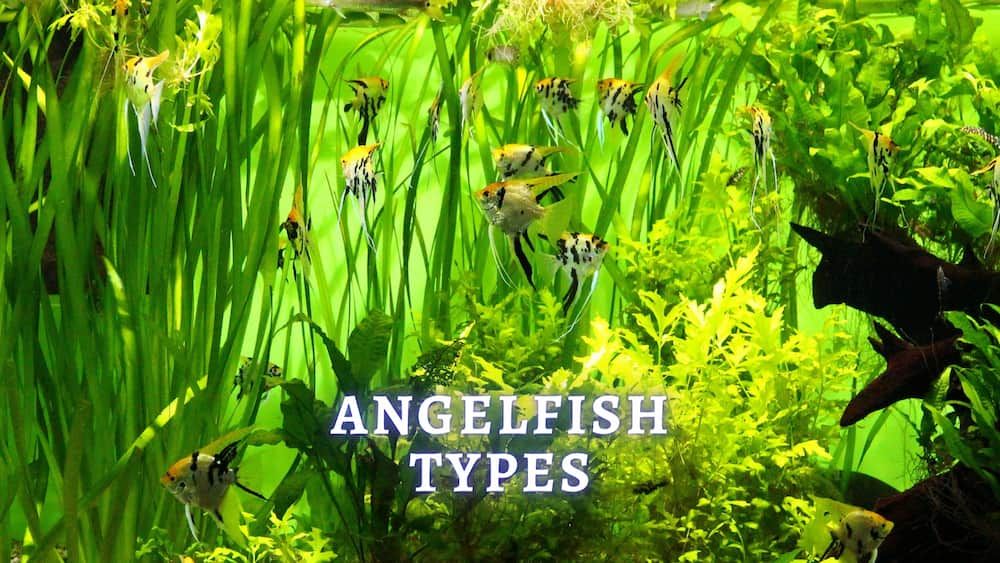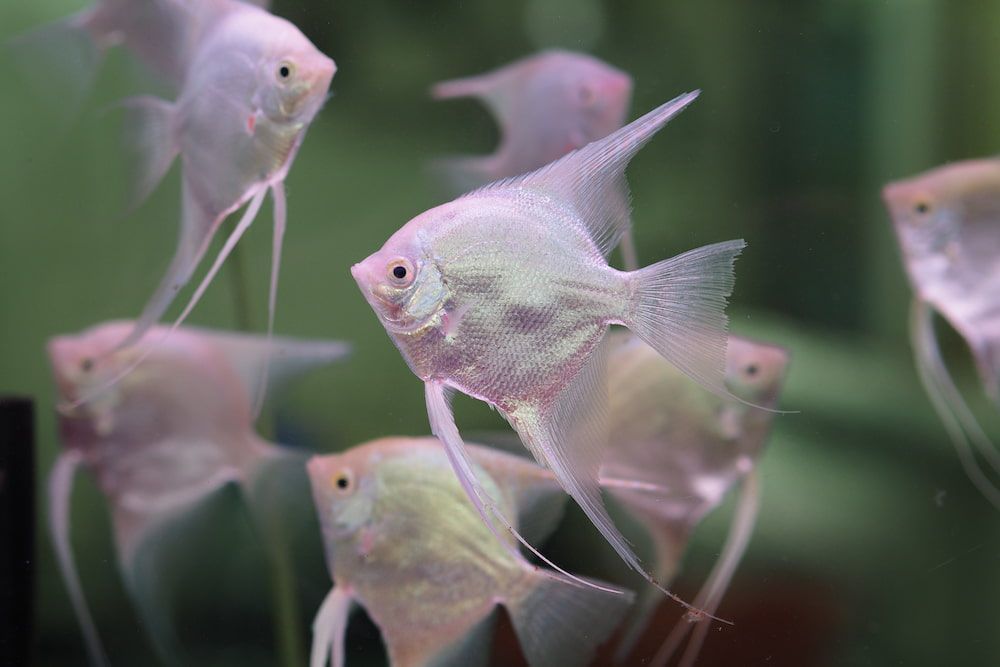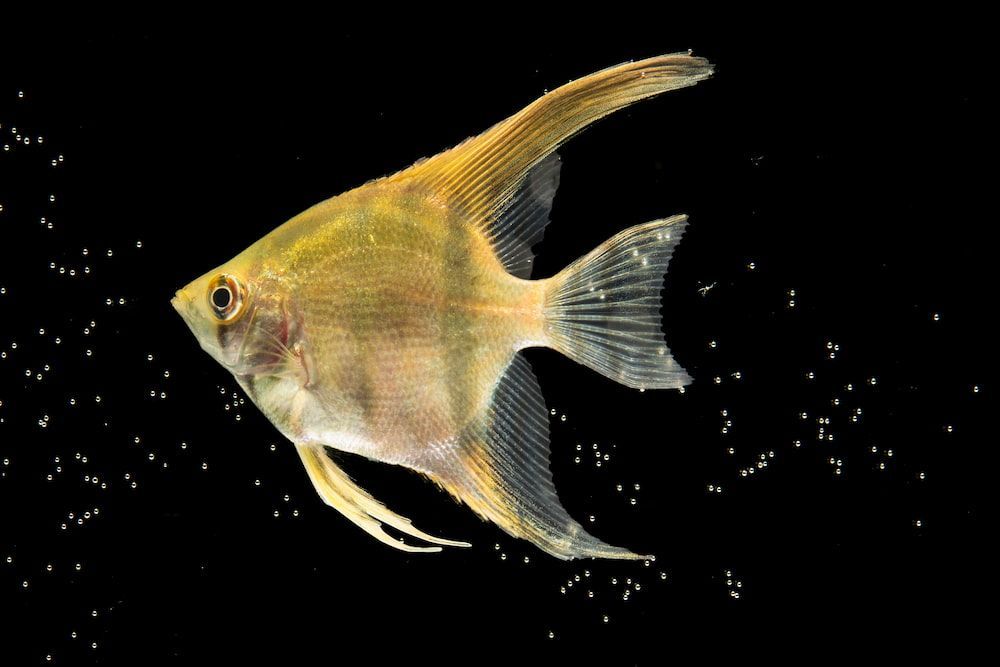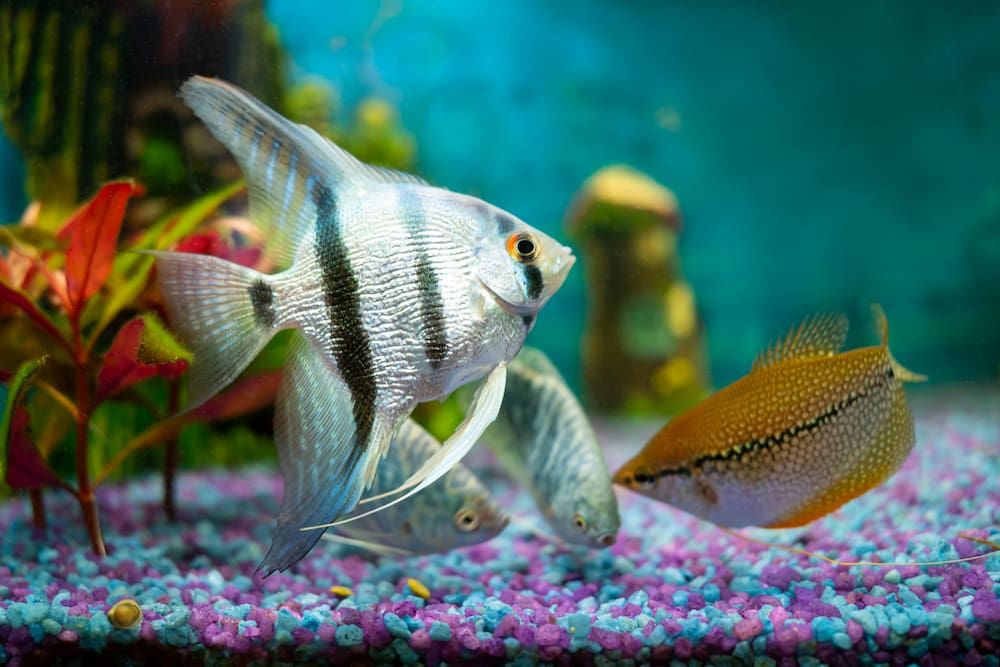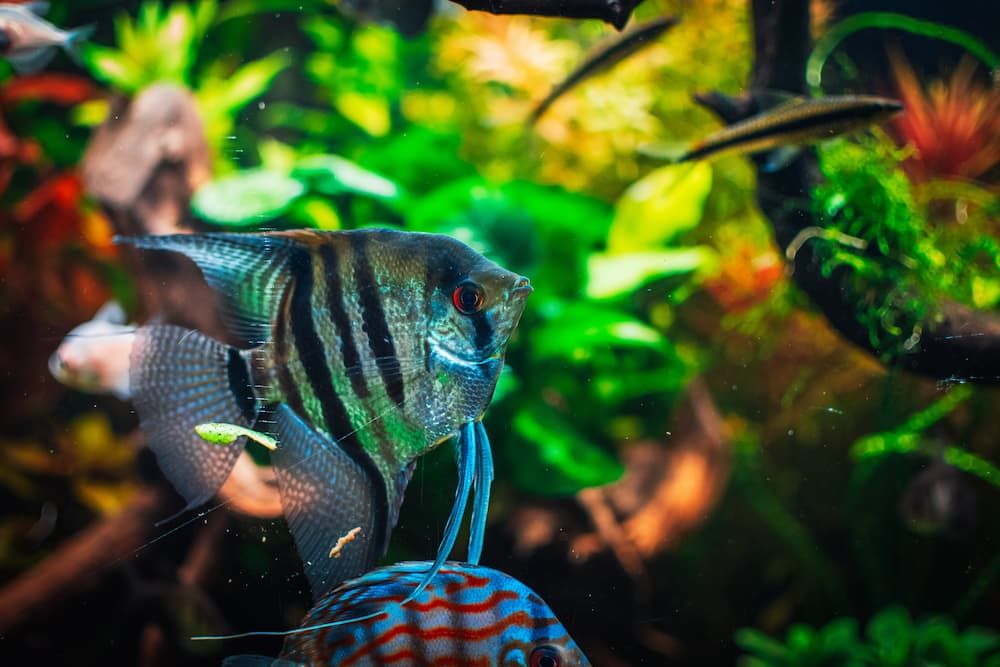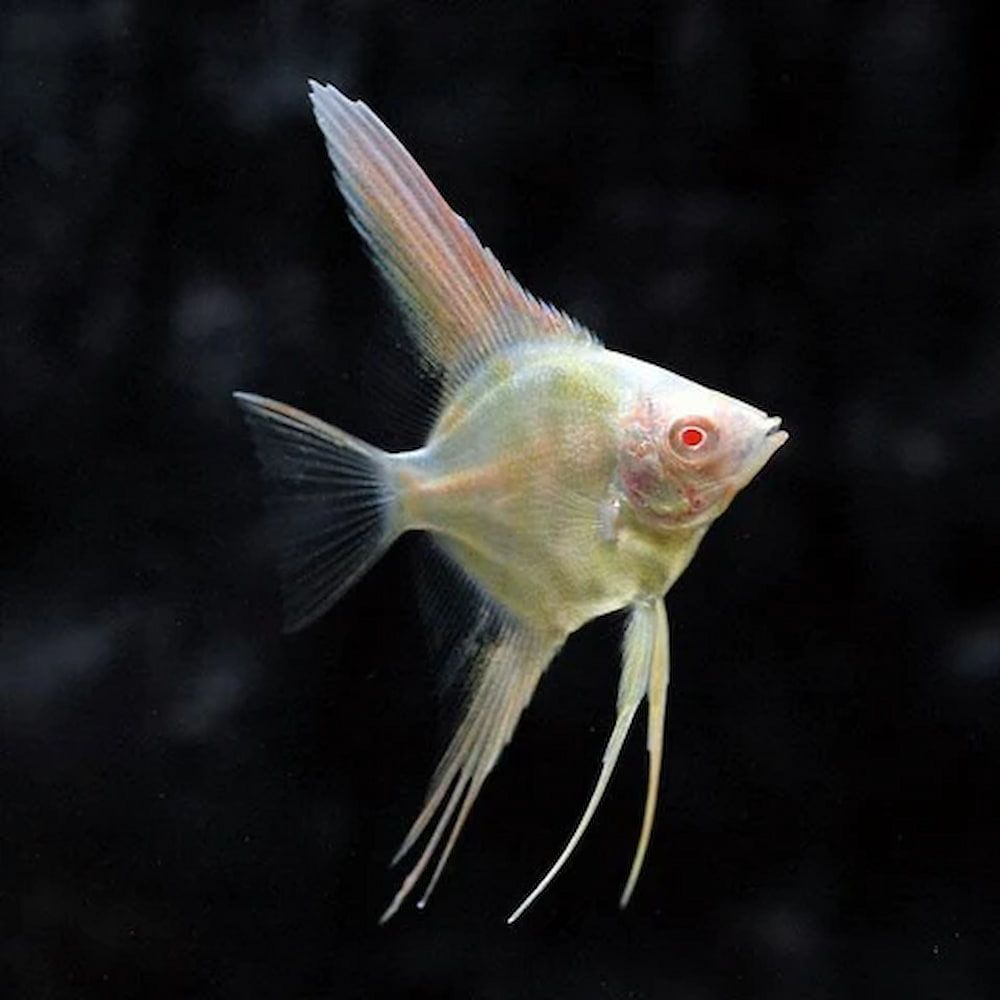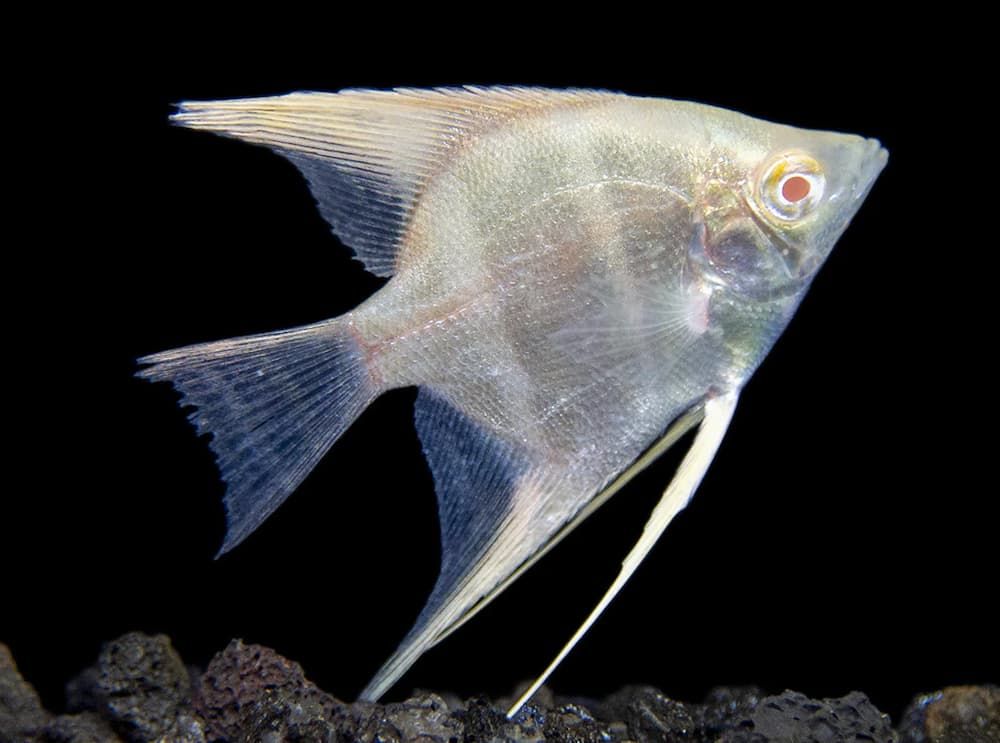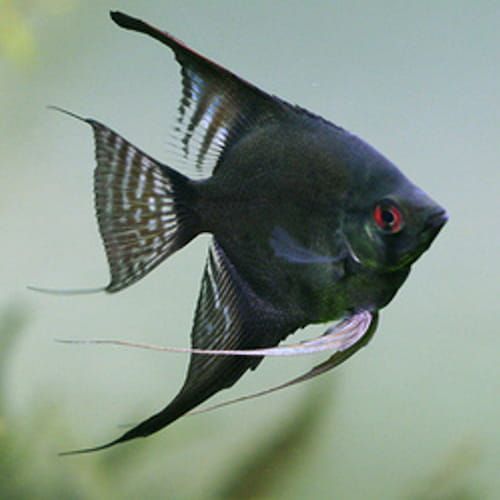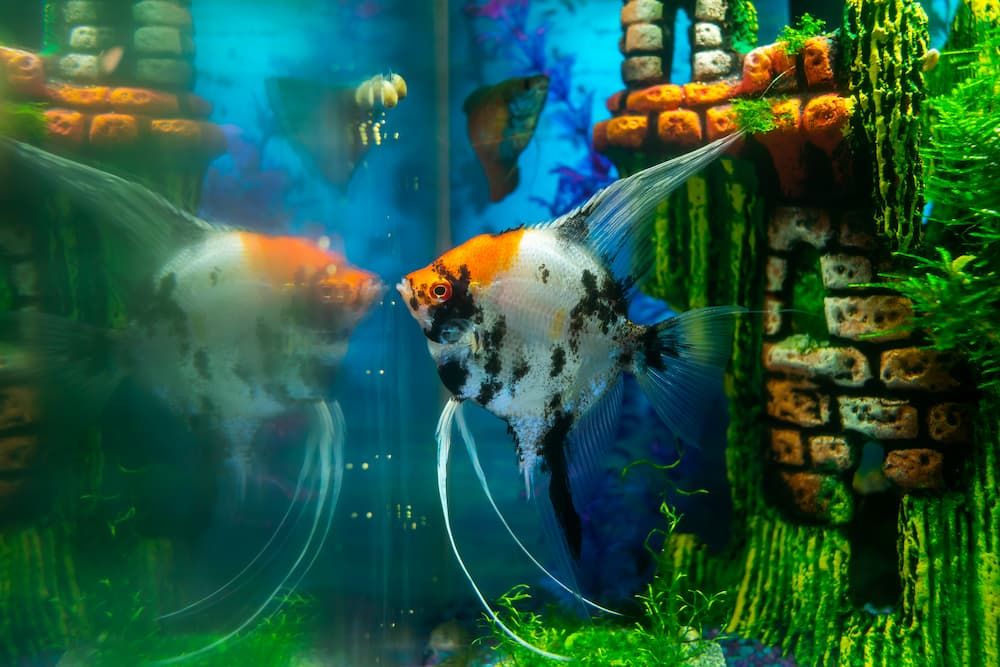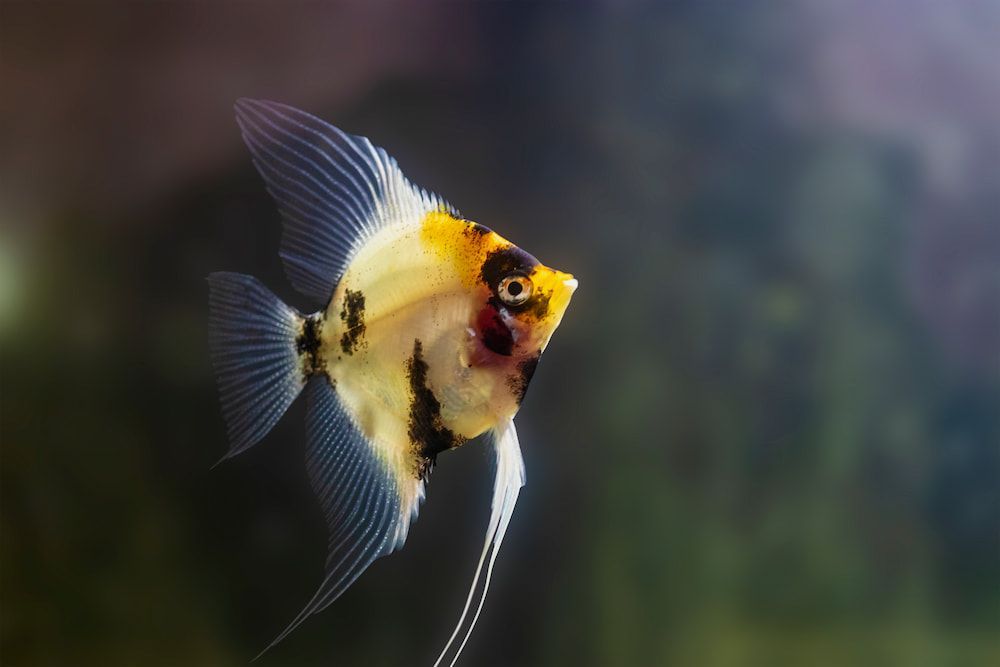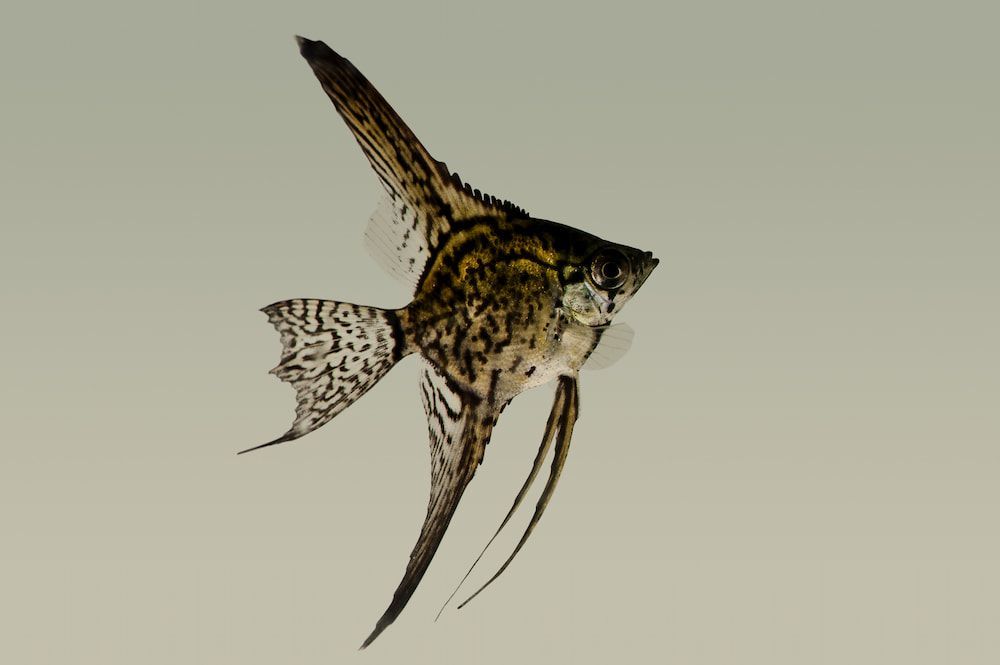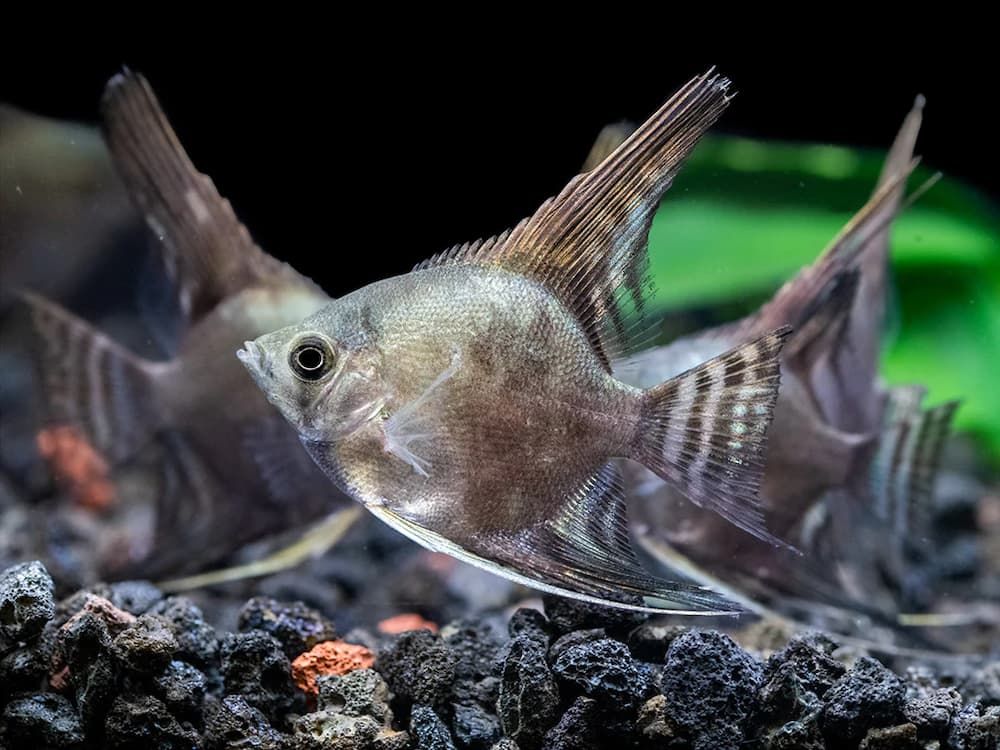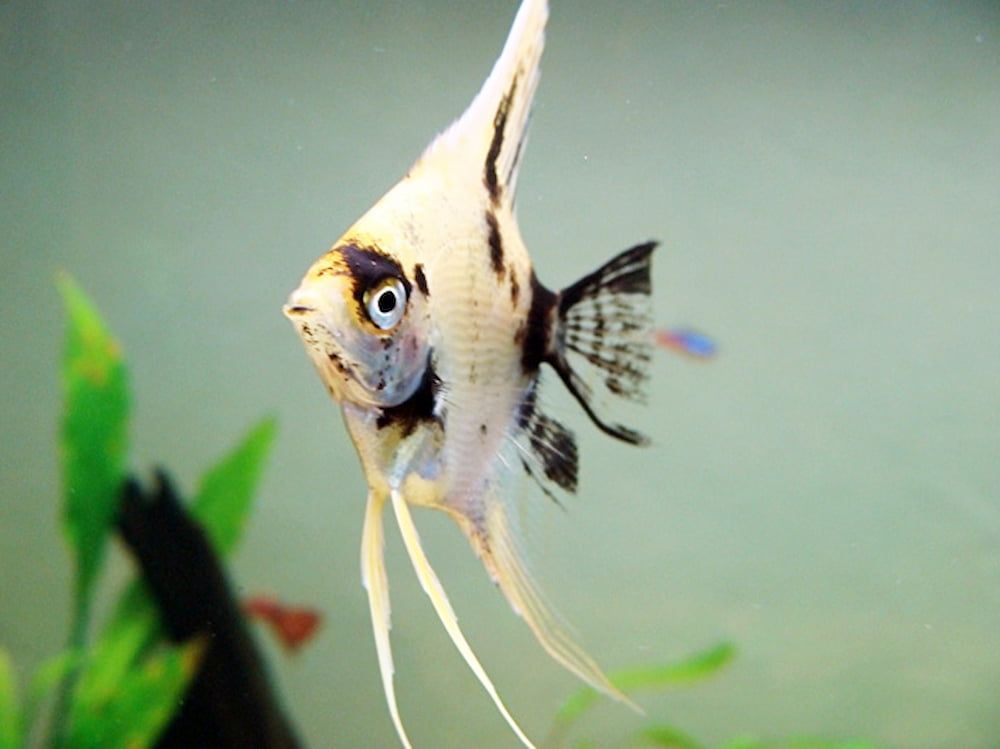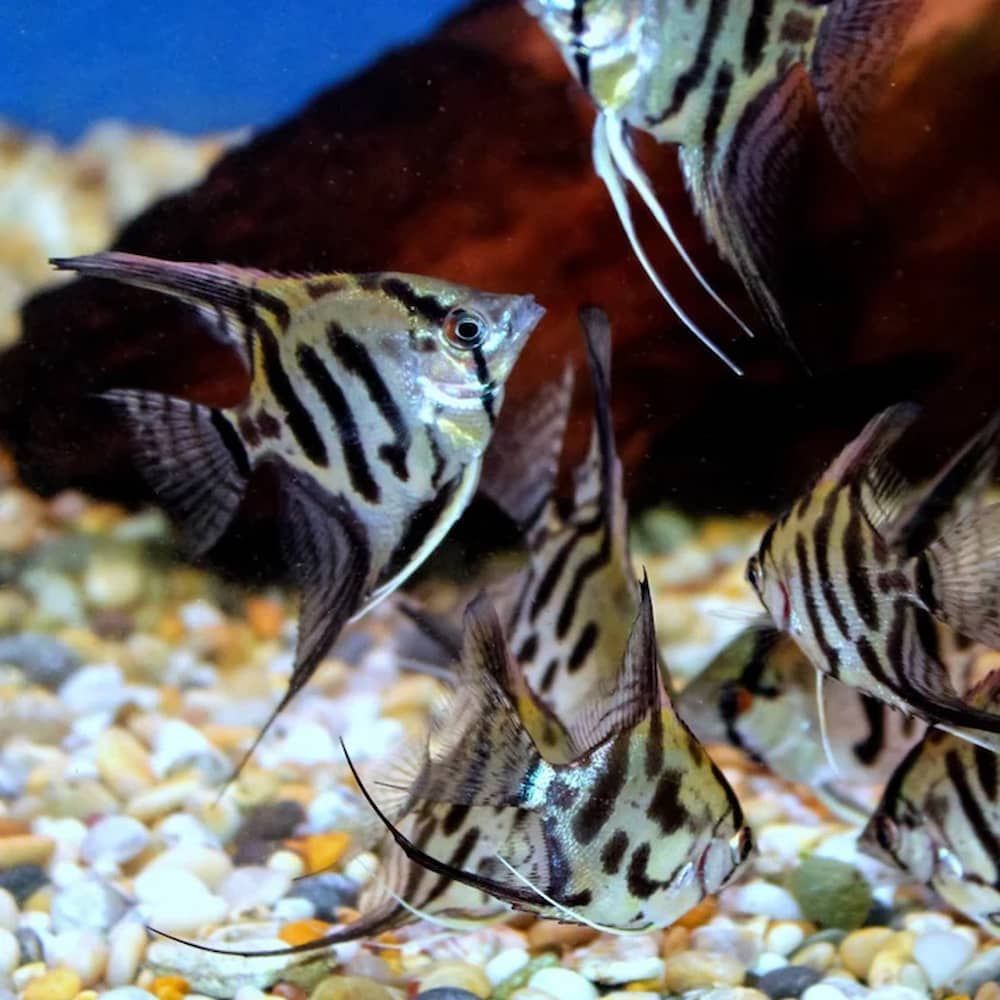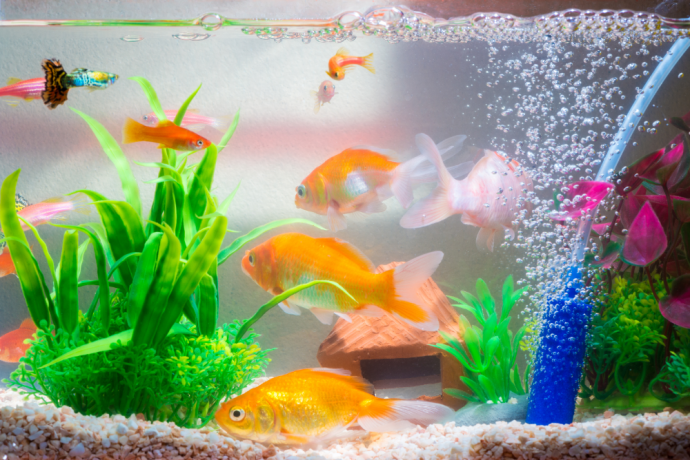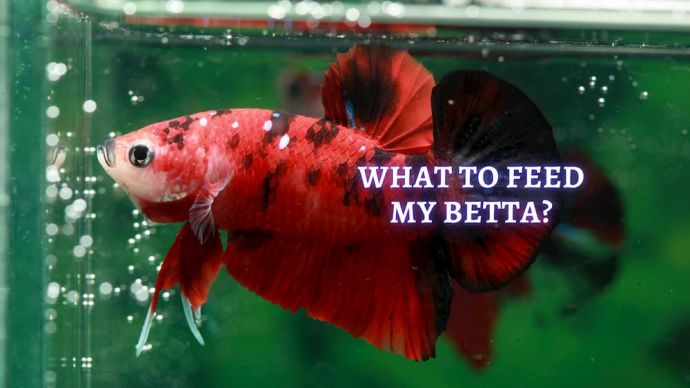Types Of Angelfish: Angelfish Types You Should Know About
Written by:
Author: Seb Jenkins
Seb is a professional SEO writer with a degree in Journalism, he has five years of experience in writing and editing. Seb specializes in topics like dog and cat breeds, aquarium guides, and pet care. He is passionate about educating and entertaining animal owners worldwide. In his spare time, Seb enjoys writing fiction novels.
View all 83 articlesLearn about our editorial process and veterinary review board.
Viewed: 96
Updated on: 06/08/2023
If you want a new fish to add to your aquarium, you have come to the right place! And we can certainly understand why you are researching the Angelfish, thanks to their beautiful coloring and markings. Before introducing a new fish to your tank, it is essential to know exactly what they need from you to live a healthy life, especially if you already have fish in the aquarium. Fortunately, we have compiled an all-you-need-to-know guide on Angelfish and all the different types to help you make that decision!
What Is An Angelfish?
Angelfish or Pterophyllum are known to be very pleasant fish to have around the tank, not only because of how beautiful and colorful they are but also because of their personalities. They are not difficult fish to care for, or breed, so they are well suited to beginners and experts alike.
The Angelfish is more than happy to engage and play with you. They are clever enough to recognize when a human is moving outside the tank, so they will often look back at you if you admire them. If you put food in the same bit of the tank daily, they will also remember the location and gather in the perfect spot to eat as quickly as possible.
The Pterophyllum breed originally comes from South America, most notably in the river basins around Brazil, Peru, Guyana, and Columbia. The Pterophyllum falls under the Cichlids family, and there are three main species – the Pterophyllum Altum, the Pterophyllum Leopoldi, and the Pterophyllum Scalare. However, you will likely only come across the latter, as they are the mainly domesticated species within the Pterophyllumumbrella.
We recommend tall and wide tanks for the Pterophyllum to thrive due to its tall fins. They also love being around driftwood and dense plant life, so keep that in mind. Pterophyllum, no matter which species or type you have, are omnivores, so they will eat smaller fish and have even been known to feed on their own eggs. Once they develop their parental instinct, egg eating won’t be as much of a problem.
As the Pterophyllum get older, they will likely fight more between themselves as they become territorial, which can become aggressive during breeding. It can be challenging to tell the male Pterophyllum from the females until breeding season.
Fortunately, even if you already have your heart set on a Pterophyllum, there are still plenty of types to choose from, each with distinctive patterns and colors. We wanted to take you through some of the most popular and a few of our personal favorites.
1. Silver Common Angelfish
As the name suggests, this is the most common Pterophyllum type, which is also why it is used for many crossbreeding to create other types. You can spot them from their shimmering silver bodies with three stripes running up the middle. Believe it or not, those stripes get darker when the fish is stressed. They usually live to around 10 years old and can grow up to six inches long.
2. Deep Angelfish, Orinoco Angelfish, Tall/Altum Angelfish
These types are very similar to the common silver, apart from a few aspects of their appearance. They have more oval bodies with brown-grey stripes with a white border. They are taller than the silver Pterophyllum and always have black eyes. In fact, they are called tall Pterophyllum because they are the tallest out of any type. They can grow to around seven inches in length but nine inches in height. In the wild, that number increases to just under twenty inches! They usually live between ten and fifteen years.
3. Silver Zebra – Zebra Angelfish
If you see a silver Pterophyllum with more than three stripes running vertically up its body, then it becomes a zebra Angelfish – for obvious reasons. The first of these stripes can often be found over the eye. A young Zebra Pterophyllum has black eyes but turns red as they grow older. They usually grow to six inches in length, eight in height, and live to around ten years old.
4. Zebra Lace Angelfish
This type is a mutated zebra Pterophyllum. They carry a darker gene which gives them a darker overall coloring, although they still have those trademark zebra stripes. You may find that their bodies have a gold or green tint to them. They usually grow to six inches in length, eight in height, and live to around ten years old.
5. Blue Zebra Angelfish
Yet another zebra variant, as the name suggests, these Pterophyllum have a blue-silver body, still with those normal zebra stripes. They usually grow to six inches in length, eight in height, and live to around ten years old. They even have transparent tails!
6. Albino Angelfish
This type is similar to the normal albino Pterophyllum, apart from the slight grey tint to their body, which makes their white stripes more visible. They also have transparent tails, and the pigmentation in their skin can change depending on the tank conditions. They can grow up to six inches in length and are pretty rare.
7. Albino Dantum Angelfish
This type is similar to the normal albino Pterophyllum, apart from the slight grey tint to their body, which makes their white stripes more visible. They also have transparent tails and the pigmentation in their skin can change depending on the tank conditions. They can grow up to six inches in length and are pretty rare.
8. Ghost Angelfish
They get their name from the lack of markings or stripes on their body, which comes from a genetic condition. As such, they look similar to the albino Pterophyllum, apart from their distinctive black eyes. They grow up to six inches in length and four in height, and can live up to a decade. They can be dark tone or light and some even gain stripes as they get older.
9. Black Ghost Angelfish
As the name suggests, this is a type of ghost Pterophyllum that has a completely black body with no marks or patterns. Even their fins are black and lack transparency. They grow up to six inches in length and four in height and can live up to a decade.
10. Blue Ghost Angelfish
Another variant of the ghostAngelfish type, these have white bodies with a blue tint to them. Some even have sky-blue bodies. They grow up to six inches in length and four in height and can live up to a decade.
11. Grey Ghost Angelfish
This is the most common member of the ghost Pterophyllum family. As the name suggests, they have grey bodies without stripes when they are younger but can develop them as they get older. They grow up to six inches in length and four in height and can live up to a decade.
12. Veiltail Angelfish
They get their name from the large fins that look slightly like a bride’s wedding veil. It is said that six out of every ten people prefer to buy this type of Pterophyllum.
13. Super Veil Angelfish
When both parents have the veil gene, they create a super veil Pterophyllum, which features even larger fins. However, they are slow growers and not as strong as most Pterophyllum.
14. Marble Angelfish
The marble Pterophyllum have silver bodies with black marks or spots, which is where they get their marble name. Each fish has its own unique pattern, kind of like a fingerprint. They grow up to six inches in length, eight in height, and live for up to ten years. They are very popular, and you can even get gold marble Angelfish, blue marble Angelfish, black marble Angelfish, and marble veil Pterophyllum.
15. Pearlscale Angelfish
When two pearl genes come together, they create the pearl Angelfish, which gets its name from the pearl-like scales on its body. These beautiful scales look more and more like pearls as they grow older and look so beautiful under the right light. The pearl angelfish types include the black pearlscale, albino pearlscale, gold pearlscale, platinum blue pearlscale, and smokey pearlscale.
16. Black Angelfish – Double Dark Angelfish
Created from two dark Pterophyllum genes, which is where the name double dark comes from. They have plain black bodies with black stripes. They can grow up to six inches in length, eight in height, and live between ten and fifteen years.
17. Black Veil Angelfish
This is a veiltail type of angelfish that has both the black and veiltail gene. Therefore, they have black coloring but also the taller fins.
18. Black Hybrid Angelfish
This is a mutation Pterophyllum between the black gene and a gold or marble gene. They have black bodies and can have a dull gold color to them in places. You can only notice spots or stripes in the right light.
19. Black Lace Angelfish
This is another mutation between gold or marble and black genes. They either have silver-black bodies or gold-black bodies, both with black stripes. Most of their fins are transparent apart from their black dorsal fins. They are friendly for beginners and can grow up to eight or ten inches in length, and a height of up to fourteen.
20. Blue Angelfish
They have silver-blue bodies and black stripes. They grow up to six inches in height and often sparkle under the tank lighting.
21. Blushing Angelfish
They have albino-like white shiny bodies without any stripes but do have a pop of color with their pink gills. This is where the blushing name comes from. They grow to six inches in length and eight inches in height.
22. Chocolate Angelfish
When both parents have the smokey gene, they can create a very rare, mutated chocolate Pterophyllum. The name comes from the dark brown chocolate bodies, although they also have a copper coloring to their dorsal fin and heads.
23. Gold Angelfish
Born out of a mutation within a black lace fry group, they have a golden tint to their silver bodies. They have no stripes and transparent fins. Some are a lot more golden than others. They can grow up to four inches in length and six in height and live up to a decade.
24. Gold Veil Angelfish
A variant of the gold Pterophyllum but this type features taller fins from the veil gene. They can grow up to six inches in length and eight in height. They have silver and gold bodies with beautiful bride-like veil fins.
25. Gold Marble Angelfish
When two parents have the same gold marble genes, or when one parent has the gold marble gene and the other has the gold gene, a gold marble Pterophyllum can be born. They look almost identical to the gold veil Pterophyllum apart from the black spots over their body. They can live as long as twelve years and grow to around six inches in length.
26. Silver Gold Marble Angelfish
A mutation to the gold marble Pterophyllum born out of one parent with the gold marble gene and any other wild Angelfish. They don’t usually have that golden tint and feature more of a silver-grey body with black dots.
27. Gold Marble Veiltail Angelfish
A mutation to the gold marble Pterophyllum, they also carry the veil gene and so feature those tall, elegant fins. They grow to six inches in length and around eight inches in height.
28. Koi Angelfish
They get their name from similar colors to the infamous Koi fish. They don’t have stripes but feature a golden orange head, transparent fins, and tails. They grow up to six inches in length and eight in height and can live up to a decade. Some have black patches, and the golden orange color can grow stronger when stressed.
29. Leopard Angelfish
A hybrid of the smokey and the zebra. They feature irregular spots all over their gold/yellow body without any stripes. They can grow a blue patch on their head after their spots fade under the tank lights. They grow up to six inches in length, eight in height, and can live more than ten years.
30. Smokey Angelfish
A hybrid of one parent with the smokey gene and any other wild Pterophyllum. They get the smokey name from their blurred stripes on dark silver/grey bodies. They only have one stripe around their dorsal fin area and the pattern on each side of their body is usually different. They live up to a decade.
31. Panda Angelfish
The name comes from their black and white colors on their body, which is similar to a panda. They have white bodies with black marks but no stripes. The fins vary from white to black to completely transparent. They grow to around six inches in length and have tall fins.
32. Clown Angelfish
They have silver bodies with random yet intricate black/grey marks all over them. They are very rare to find. They can grow to six inches in length and eight in height and live around ten years. Each fish has its own unique pattern, and they are a peaceful presence around the tank.
Frequently Asked Questions
What is the rarest angelfish?
Some of the rarest Angelfish types include the Albino Dantum Angelfish, the Chocolate Angelfish, and the Clown Angelfish.
How many angelfish should be kept together?
Angelfish are generally well suited to living together but can become more hostile during mating season. If you have a 29-gallon tank, we recommend a maximum of four Angelfish, but you can increase that to five or six youngsters in a 55-gallon tank. Just be prepared to move some if they keep fighting.
What is the most beautiful freshwater angelfish?
Some would say that the veil variety angelfish is among the most beautiful because its fins look like the long veil of a bride on her wedding day.
What is the most popular angelfish?
The most popular and common Angelfish is the Silver Common Angelfish.
Conclusion
And there we have it, your all-you-need-to-know guide on the Angelfish and over 30 different types to choose from. Feel free to browse our list and see which ones jump out at you! Pterophyllum are a joy to have around the tank; there are so many beautiful, unique, and vibrant types to choose from!
 Freshwater Fish Snail Eggs in Aquarium and What to Do with Them and How to Remove if Needed
Freshwater Fish Snail Eggs in Aquarium and What to Do with Them and How to Remove if Needed - 92
- 0
 Freshwater Fish Betta Fish Temperatures: Guide To The Perfect Betta Fish Water Temperature
Freshwater Fish Betta Fish Temperatures: Guide To The Perfect Betta Fish Water Temperature - 252
- 0









